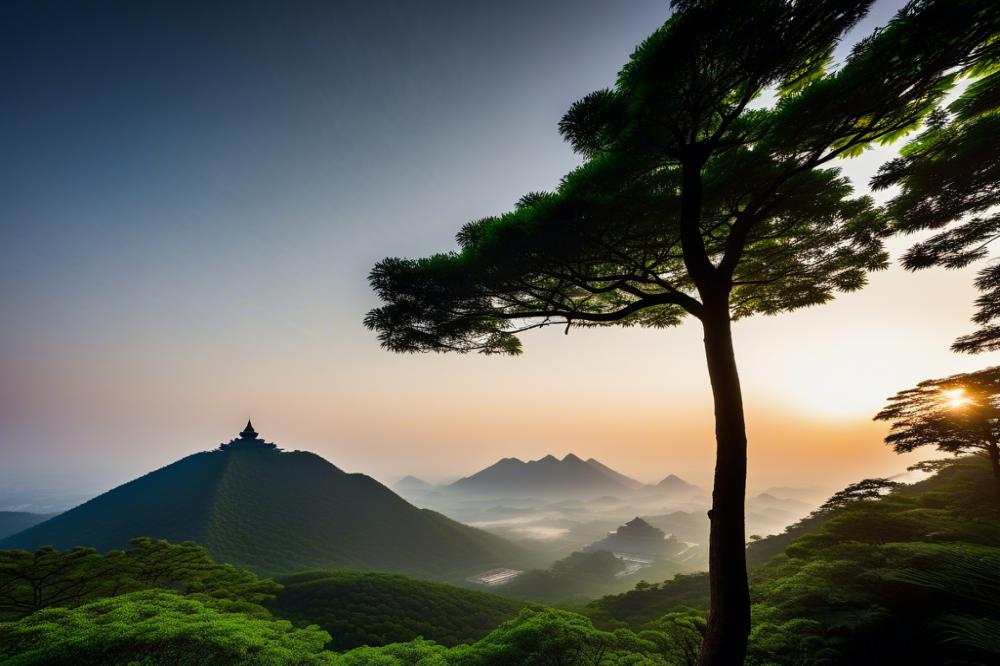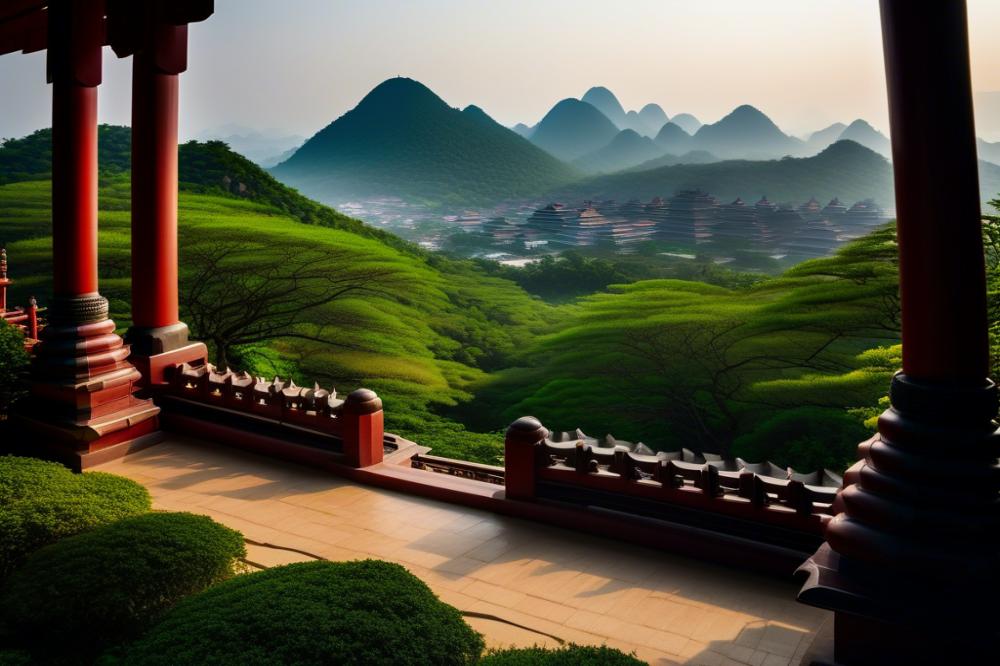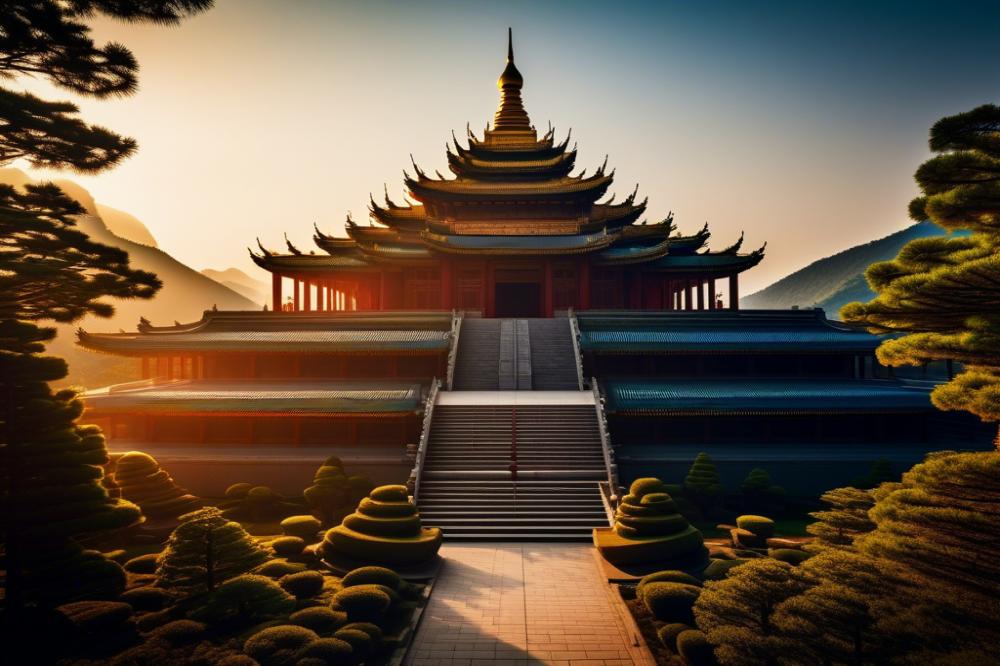spiritual pilgrimage to Oudong Mountain temples
Nestled in the heart of Cambodia, Oudong Mountain stands as a revered spiritual destination. It was once the capital of the Kingdom of Cambodia, and it now holds a significant place in the nation’s Buddhist heritage. Pilgrims and visitors flock here to experience its sacred sites, where tranquility and reflection abound. The presence of various temples enhances its allure and marks it as a destination rich in spirituality.
Temples in Cambodia play vital roles in the lives of many. They serve as places for community gathering, meditation, and worship. Within these walls, traditions are passed down through generations. Visitors often find themselves immersed in a culture that emphasizes reverence and connection to the past. This historic significance resonates deeply with those who seek meaning in their travels.
A journey to Oudong Mountain is more than just a visit; it is a cultural journey that intertwines adventure with personal reflection. Many choose to embark on a spiritual pilgrimage to discover inner peace and serenity among nature’s beauty. As they explore the landscape, blending the calming aspects of nature retreats with profound spiritual experiences, travelers gain insights that might otherwise remain hidden.
Engaging with the local culture while visiting the temples can transform an ordinary holiday into something memorable. It invites people to reflect, meditate, and appreciate the delicate balance between nature and spirituality. Understanding these elements allows for a deeper appreciation of Oudong Mountain as a sanctuary for the soul.
Historical Significance of Oudong Mountain

Oudong served as the capital of Cambodia from the 17th to the 19th centuries. This city once flourished with royal residences and bustling marketplaces. Its importance peaked during the reign of King Norodom, who moved the capital from Phnom Penh to Oudong. As a result, it became a vital political and cultural center of the Khmer Empire.
The sacred sites on Oudong Mountain are crucial for understanding the country’s Buddhist heritage. Many temples line the mountaintop, showcasing intricate designs and rich history. These structures played a key role in religious practices and were places for meditation. Pilgrims visit these temples seeking spiritual enlightenment and peace.
Several significant historical events are tied to this location. In the late 1800s, the French colonization altered the course of Cambodia’s history, impacting Oudong significantly. During this time, many precious artifacts and cultural treasures were lost or destroyed. However, some elements of the historic civilization have survived on this mountain, connecting visitors to the past.
Visiting Oudong offers a unique opportunity for a cultural journey infused with nature. Travelers can engage with the stunning landscapes while reflecting on the spirituality of the temples. This blend of history and nature makes a trip to Oudong Mountain a valuable travel experience. With every step, the whispers of the past resonate, inviting exploration and discovery.
Exploring the Temples

Visitors to Oudong Mountain will find several remarkable temples, each with its own story. Among these sacred sites, Wat Udong stands out due to its impressive stupa and beautiful surroundings. This temple dates back to the 17th century and reflects the rich Buddhist heritage of Cambodia. The grounds are tranquil and serve as a perfect place for meditation and reflection.
Another noteworthy site is Wat Preah Reach Tor, known for its intricate carvings and colorful murals. These artistic features depict important events from Buddhist teachings. Pilgrims and locals often gather here to pray and share in the spiritual atmosphere. The blend of ancient craftsmanship and natural beauty makes this temple a significant stop for travelers.
Architectural Styles and Features of the Temples
Buddhist temples on Oudong Mountain exhibit a variety of architectural styles that showcase the unique cultural influences of the region. Traditional Khmer architecture is evident in the tiered roofs and detailed sculptures. The use of vibrant colors adds an element of charm and invites visitors to explore. Large statues of Buddha often serve as focal points within the temple complexes, creating an inviting space for worship.
In addition to traditional elements, some temples incorporate modern designs, reflecting changes in Cambodian society. This fusion of old and new creates a diverse landscape that represents the evolving nature of spirituality. Visitors appreciate the quiet nook created by trees and flowers surrounding these historic sites, offering a nature retreat away from the bustling world.
Cultural Artifacts and Their Significance in Buddhism
Various cultural artifacts can be found at the temples, each carrying deep significance in Buddhism. Art pieces such as statues, carvings, and ancient texts provide insight into the beliefs and practices of followers. These relics serve not only as decorative elements but also as reminders of the spiritual journey one embarks on when visiting these locations.
Many temples house sacred objects believed to hold religious power. For example, sacred urns containing relics of past monks attract pilgrims seeking blessings. Such artifacts highlight the historic significance of these temples as centers of faith and culture. Engaging with these elements can deepen one’s understanding of Buddhist teachings and enhance travel experiences.
A Journey Through Nature

The natural beauty surrounding Oudong Mountain enchants visitors. Lush greenery and vibrant flowers create a picturesque backdrop for a spiritual retreat. Cambodia’s wide-open spaces offer fresh air that cleanses the mind. Each landscape provides a unique canvas for contemplation.
Walking along the trails, one might encounter serene settings perfect for meditation. Hidden spots invite travelers to pause and reflect. These moments allow individuals to connect deeply with their spiritual side. Silence in nature can feel sacred; it enhances the sense of peace and connection to the earth.
Exploring this area goes beyond mere sightseeing. Natural surroundings play a significant role in enriching travel experiences. Individuals often find that the calm atmosphere boosts their meditation practice. Sacred sites near the temples provide ideal locations for stillness and introspection.
In this retreat, the importance of nature becomes clear. Observing the hills and valleys fosters a sense of belonging. Many travelers feel as if they are a part of something larger. Nature and spirituality intertwine here, making the cultural journey even more meaningful.
Experiencing the historic significance of these temples enhances one’s appreciation for Cambodian Buddhist heritage. While admiring the ancient architecture, the surrounding wilderness serves as a reminder of life’s beauty. This blend of nature and spirituality allows visitors to find their own path to tranquility.
Cultural Journey and Travel Experiences

Experiencing local culture and traditions in Oudong is a profound part of any travel experience in Cambodia. Visitors often find themselves immersed in the daily life of the community. This area is rich in history and spirituality, making it a unique destination for those seeking more than just scenic views.
Interacting with monks and community members offers a chance to understand Buddhist heritage better. Many of the temples were built hundreds of years ago, providing visitors with a glimpse into Cambodia’s past. Monks are typically welcoming and open to sharing their knowledge. Engaging in conversation with them can deepen your appreciation for their way of life.
Participation in rituals can enhance your connection to the sacred sites. Observing or joining in ceremonies reveals the importance of meditation in their practice. Local customs, such as offering food to monks, also allow travelers to take part in spiritual traditions. Such experiences contribute to a deeper understanding of Buddhist practices and their relevance in contemporary life.
Each temple offers something different. Some are known for breathtaking views of the surrounding hills, perfect for a nature retreat. Others have intricate architecture that tells stories of past kings and their devotion to spirituality. Learning the historic significance of these structures can be both enlightening and inspiring.
Traveling to Oudong Mountain is not just about the visuals. It is about connecting with the essence of Cambodian culture. Appreciating the rituals and traditions leads to richer travel experiences. Visitors leave with memories that linger long after their journey ends.
Personal Reflection and Spiritual Growth
Traveling to the temples of Oudong Mountain offers deep insights into life and spirituality. Visitors often find that wandering through these sacred sites sparks a greater understanding of themselves. Each temple holds its own story, connecting the past with the present. Moments of silence invite reflection, bringing clarity and peace.
During the pilgrimage, many travelers engage in meditation. This practice creates a space for tranquility, making it easier to connect with one’s inner thoughts. Such experiences often lead to significant personal growth. Spirituality influences travelers as they explore their beliefs and values more deeply.
While some seek adventure, others embark on a cultural journey. This dual focus enriches the experience, revealing both the historic significance of the region and the beauty of nature. The serene environment can act as a retreat that rejuvenates the spirit. Observing the intricate details of the temples and the surrounding landscape can be awe-inspiring.
Travel experiences often serve as catalysts for change. People reflect on their lives and reconsider their priorities. A journey to these temples can encourage individuals to nurture their spiritual side. Travelers are reminded of the importance of seeking peace within themselves.
Readers are encouraged to explore their own paths to spirituality. Finding opportunities for reflection can lead to transformative experiences. Whether it’s through pilgrimage or quiet time in nature, each person’s journey is personal. Engage with places that resonate, and allow those connections to inspire growth.
Reflection on the Spiritual Journey
The significance of the temples atop Oudong Mountain extends beyond their physical beauty. These sacred sites offer a glimpse into the rich heritage of Cambodia. Pilgrims and visitors alike come to seek peace, inspiration, and connection to something larger than themselves. Each temple holds a story and a unique history that resonates with those who visit.
Traveling to spiritual places invites individuals to ponder their own beliefs and values. The serenity found within these temples encourages deep reflections. Visitors often leave with a renewed sense of purpose and clarity. This experience illustrates how travel can merge with spiritual discovery to create lasting memories.
Exploring Oudong Mountain can be transformative. The journey allows individuals to reflect on their own lives while surrounded by breathtaking views and ancient architecture. Each step taken on this mountain can lead to profound realizations. Embracing the calmness of the temples adds to the overall experience, making it meaningful and wholesome.
Ultimately, a visit to these sites not only enriches one’s understanding of Cambodia but also fosters personal growth. For those looking to enhance their spiritual journey, the temples are a wonderful destination. Consider making this pilgrimage for an unforgettable experience that might change your perspective on travel and spirituality.



